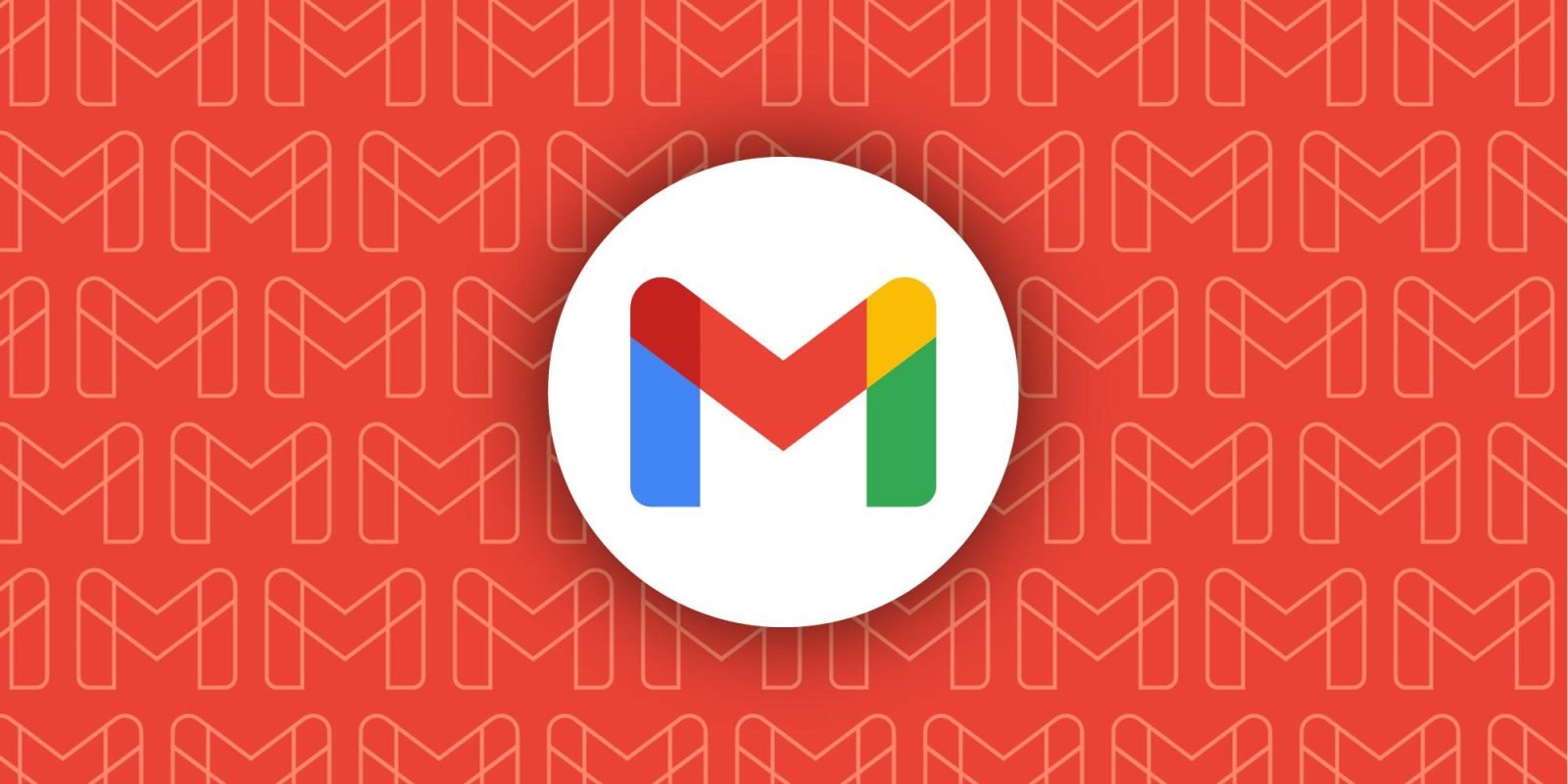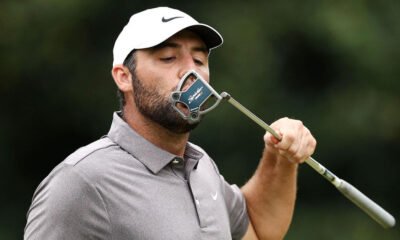Top Stories
Open Championship 2025 Round 3: What to know as Scottie Scheffler nears a win

The Athletic has live coverage of the final round of the 2025 Open Championship.
Scottie Scheffler, once again, is inevitable.
The world’s top-ranked player authored another masterclass Saturday, firing a bogey-free 67 to take a four-shot advantage into the final round. Scheffler will enter championship Sunday on a run of 25 consecutive holes without a bogey. He’s in search of his fourth major and first Claret Jug.
Here are the top numbers and notes to know entering the final round at Royal Portrush.
1. Scheffler hit seven fairways, 15 greens in regulation and made seemingly every critical putt he looked at in the most ho-hum, casual flawless golf one could ever conjure up. The brilliance of Scottie’s ball striking is a given, as he’s dominated every key tee-to-green metric in the sport over the last three years. But Scheffler has had the most criticized club in his bag match the other 13 this week: Scottie leads the Open field in strokes gained putting with one round to play.
Consider this: On the PGA Tour this season, players make putts of 5 to 10 feet at a clip of right around 56 percent. Two seasons ago, Scheffler was ranked 155th on the tour in make rate from that range. Scottie is a preposterous 9-of-10 putting from 5 to 10 feet so far this week.
Just one week ago, Scheffler was among the worst putters in the field at the Scottish Open. Now, inexplicably, it could be his biggest strength on the road to an Open victory.
2. While the putter will get plenty of credit, it’s not like Scheffler’s irons have been slacking. Scheffler is T5 in the field in greens in regulation and second in strokes gained approach this week, elite figures that, at this point, serve as the minimal expectation for him. Scheffler has hit 15 of 18 greens in regulation in each of the last two rounds, just the second time he has done that in back-to-back days in a major (he also did it at St. Andrews in 2022).
Scheffler was the only player in the field to birdie the difficult par-3 16th hole in both Rounds 1 and 2 — he went ahead and did it Saturday, too. Scottie is 6 under on the par 3 holes this week, three shots better than any other player.
Scheffler extended his lead at the Open on Saturday. (Alex Slitz / Getty Images)
3. The numbers don’t lend much oxygen to the hopes of a comeback winner. Scheffler has successfully converted all three of his previous 54-hole leads in major championships: the 2022 Masters, 2024 Masters and 2025 PGA Championship. Across all tour events, he has gone on to win each of the last nine times he has held the outright 54-hole lead.
While the golf world might have some of its perspective on finishing tournaments skewed by the career of Tiger Woods, that kind of Mariano Rivera-like closing rate isn’t normal. Over the last 50 years, players with an outright 54-hole lead in majors have gone on to win 46 percent of the time. In all PGA Tour events over the last decade, players to lead outright entering the final round win at a clip of just 47 percent.
Woods was, famously, 14-of-15 closing out majors, and that included instances when he shared the 54-hole lead. Woods’ dominance is impossible to equal but what Scheffler is building is the closest facsimile in the years since.
4. With a victory, Scheffler would be just the fourth player in golf history to win the Masters, PGA and Open all before age 30. The other three are Woods, Jack Nicklaus and Gary Player.
Scheffler is trying to become the eighth man to win a fourth major before turning 30 — four of the previous seven to do it went on to complete the career Grand Slam. A year ago, Xander Schauffele became the sixth player to win a PGA and Open in the same season — if Scottie closes out the victory Sunday, it will mark the first time that has happened in consecutive seasons.
5. Haotong Li will be in the final pairing with Scheffler, facing steep odds in his attempt to become the first male from China to win a major championship. Haotong, who leads the DP World Tour this season in strokes gained approach per round, has hit three more greens in regulation than any other player through three days. He ran off a streak of 23 consecutive GIR within Rounds 1 and 2, the longest such streak in the last two Opens held at Portrush.
Eight years ago, Haotong capped off his Open debut at Royal Birkdale with 63. He will likely need something close to that to catch Scheffler.
6. A chip-in eagle at the second hole vaulted Matt Fitzpatrick into a tie for the lead early in Saturday’s round. He didn’t hold the position long, though. The 2022 U.S. Open champion played the rest of his round in 1-over-par, however, seeing his one-shot deficit entering Saturday expand to five by the time he walked off the 18th green.
Fitzpatrick holed eight putts of 10 feet or longer in the first two rounds this week, buoying his lofty leaderboard spot. He made just one of those on Saturday, a 15-footer for birdie at 15. The last player to overcome a final round deficit of five strokes or more to win the Open was Phil Mickelson in 2013.

Fitzpatrick shot an even-par 71 on Saturday. (Alex Slitz / Getty Images)
7. Rory McIlroy made an eagle and four birdies Saturday to shoot 66, tying his lowest ever weekend round in an Open Championship. He will headline a Sunday quartet of players at 8 under, six shots behind Scheffler to begin the final round.
Despite hitting just 14 fairways this week — fewest of any player to make the cut — McIlroy is tied for third in the field in greens in regulation (77.8 percent). The reigning Masters champ has been excellent on the greens at Royal Portrush this week, ranking firmly in the top 10 in strokes gained putting per round.
While McIlroy has never won a major when trailing entering the final round, he has more PGA Tour titles when trailing through 54 holes than any other player since joining in 2010. His largest come-from-behind win as a pro is seven shots at the 2014 BMW PGA Championship.
8. Lee Westwood had an inauspicious start to his third round, carding three bogeys and a double on his way to a front-nine 40. He was a completely different man on the back side, making six birdies to finish his day. Westwood’s back-nine 29 ties the lowest in any single round in the history of the Open. Six years ago, Ryan Fox also shot 29 on the second nine of Royal Portrush, doing so in the opening round.
The round of the day belonged to Russell Henley, whose 65 tied his lowest career round in any major championship. Henley, who finished fifth last year at Royal Troon, entered the week coming off three consecutive top-10 finishes, including a tie for 10th last month at Oakmont.
9. Englishman John Parry aced the 13th hole Saturday, the first hole-in-one of the week at the Open. It was just the 26th ace in the Open over the last 40 years, and the second at Royal Portrush in the modern era. Six years ago, Emiliano Grillo also aced the 13th, doing so in the opening round.
Parry’s ace was one of 15 eagles or better on the day, the most in Round 3 of an Open since 17 were made in 2006 at Royal Liverpool. Over the last 30 years, the most in any round is 28 — in Round 1 that same week.
10. The field scoring average dipped below 70 in Round 3, by far the lowest of the week. It’s the first Open round with a field score in the 60s since Sunday in 2022 at St. Andrews.
Since the beginning of the 2000 season, just 11 of 102 men’s major winners have been four or more shots off the lead entering the final round.
(Top photo: Alex Slitz / Getty Images)
Top Stories
Wake Up Babe, Dolby Vision 2 Just Dropped After 10 Years—Yes, It’s Powered by AI

After more than 10 years, Dolby is ready to bring its game-changing Dolby Vision tech into the future with (drum roll) Dolby Vision 2. As a part of IFA 2025, Dolby took the wraps off its sequel to Vision, which brings an array of new capabilities to the company’s proprietary HDR format.
Powering Dolby Vision 2 is an all-new engine that enables tools like “Content Intelligence.” Content Intelligence, as you may have guessed, uses AI to better adapt your TV’s picture to content that you’re watching, fine-tuning aspects based on not only what you’re watching but also where you’re watching it. Within content intelligence, there are several more specific tools, including precision blacks that adjust dark scenes on the fly, which, if it works, is great for anyone who loves OLED panels but has gripes with their performance on darker content.
There’s also—and this one is pretty cool—a light-sensing technology that, according to Dolby, monitors ambient lighting in your room and can automatically optimize your TV based on the lighting in your specific environment. As someone with an unusually dark apartment, I’m all for that, though I’m curious whether tech like this would drastically turn the brightness on my TV way down. I wouldn’t be mad about that, but maybe other people will? Lastly, there are tweaks to Dolby Vision’s handling of fast-paced content like gaming and live sports that are meant to better adjust motion control and white point, which controls the color temperature of whites on your screen.
Dolby is splitting Vision 2 into two tiers—Dolby Vision 2 and Dolby Vision 2 Max—and it says the latter will be available on the “highest performance TVs” and come with “additional premium features.” Gizmodo reached out to Dolby to clarify exactly what the difference is between those two tiers. Here’s what it said:
“Dolby Vision 2 Max includes capabilities designed to unlock the full capabilities and best picture quality on the highest-performing TVs. This includes capabilities such as bi-directional tone mapping, Authentic Motion, and more advanced tools tailored for enthusiasts.”
That tells us a little more, I guess, but from the sounds of it, Dolby Vision 2 Max will be designed to take advantage of the higher fidelity of expensive TVs, while Dolby Vision 2 is geared more toward “mainstream” TVs, in the company’s words. To start, Dolby says it will focus on the “mainstream” side of things, since it will begin rolling out Vision 2 on Hisense panels, though there’s no word on timing and availability quite yet. It says those Hisense TVs will be powered by the MediaTek Pentonic 800 chipset, though.
It’s been 10 years since the release of Dolby Vision back in the day, which allowed TVs to adjust and optimize content on your screen from scene to scene or even frame to frame and bridge the gap between cinema and at-home viewing. It’s been a long time in the works, but it’s no surprise to me that Dolby Vision 2 would be released now, given advancements in AI and their ability to understand context. More than that, though, Dolby Vision 2 should help better optimize current and future generations of TVs, which have obviously changed quite a bit since 2014. As always, though, seeing is believing, so we’ll be the judge of that when we can lay eyes on Dolby Vision 2-assisted content for ourselves.
Top Stories
Kraft Heinz is splitting up, separating hot dogs from ketchup : NPR

Kraft Foods and Heinz merged into one company in 2015.
Gene J. Puskar/AP
hide caption
toggle caption
Gene J. Puskar/AP
Hot dogs go to the left; ketchup to the right. That’s Kraft Heinz, one of the world’s largest food conglomerates, splitting into two companies.
The breakup comes a decade after its messy mega-merger, orchestrated by billionaire investor Warren Buffett and considered one of his notable missteps. In recent weeks, both Kraft Heinz and Buffett’s Berkshire Hathaway took multibillion-dollar impairment charges reflecting the declining value of the food giant.
Kraft Heinz spent years slicing its costs while rivals invested in new ideas to keep up with changing consumer tastes. Budget-conscious shoppers have been buying more store-brand packaged foods, while people willing to spend extra often reach for fresher alternatives to processed products.
Now, Kraft Heinz executives hope the sum of two separate companies will be greater than the firm’s current value.
The first will focus on shelf-stable foods and include brands Heinz, Philadelphia and Kraft Mac & Cheese. The second will include more of what the company describes as groceries, with brands such as Oscar Mayer, Maxwell House, Capri Sun and Lunchables. The latter will be run by Kraft Heinz’ current CEO, Carlos Abrams-Rivera.
The merger went sour
Kraft Foods and H.J. Heinz merged in 2015 in a mega-deal led by the firms that controlled Heinz: Buffett’s Berkshire Hathaway and Brazilian private-equity firm 3G Capital.
3G was famous for its cost-cutting approach to consumer companies, having reinvigorated Burger King and beverage giant Anheuser-Busch. But the strategy failed to feed much growth at Kraft Heinz.
In 2019, after massive layoffs and lost sales, the company shocked Wall Street by writing down the value of marquee brands Oscar Mayer and Kraft by $15 billion. It faced shareholder lawsuits and an investigation by U.S. financial regulators.
In July, Kraft Heinz once again reported a drop in sales and a net loss of nearly $8 billion, largely thanks to a $9.3 billion impairment charge attributed to the declining share price. Soon after, Berkshire Hathaway also wrote down the value of its investment in Kraft Heinz with its own $3.8 billion impairment charge.
Buffett had maintained his financial stake even as 3G Capital completed its quiet exit from Kraft Heinz last year. In a rare admission, Buffett did acknowledge he “was wrong in a couple of ways on Kraft Heinz” and had overpaid in the deal, but praised the historic strength of the brands.
History is a who’s-who of food brands
Pittsburgh-based Heinz began in 1869 with grated horseradish that Henry J. Heinz packaged in a clear jar to show off its quality. But of course it was his ketchup – or “catsup” as it was known for a while – that brought Heinz fame, followed by baked beans.
Illinois-based Kraft brothers started their business selling cheese by horse and wagon in the early 1900s. During World War I, they supplied the U.S. Army with cheese processed to resist spoilage.
The Great Depression saw Kraft introducing the mayo-like Miracle Whip and the iconic mac and cheese mix, one of the first pre-packaged, shelf-stable dinners. The Kraft brothers also acquired Philadelphia – the cream cheese – and Velveeta. And in 1935, hot liquid cheese poured onto cold stainless steel and cut into squares set the stage for Kraft Singles cheese slices.
In the 1980s, Kraft was bought by tobacco giant Philip Morris during a food-company buying spree. That’s when Kraft ballooned to include Nabisco, Jell-O, Maxwell House and hot-dog maker Oscar Mayer.
In the early 2000s, Kraft again became its own publicly traded company. Later it spun off a separate snacking company, Mondelez, which makes Oreo cookies and Ritz crackers.
The big food meltdown
After its 2015 merger, Kraft Heinz wanted to jump-start growth by buying rival Unilever, maker of Hellmann’s mayonnaise and Ben & Jerry’s ice cream. But the European conglomerate rejected the deal.
Kraft Heinz tried to refresh its food offerings and address families’ growing health concerns. It cut the sugar level in its Capri Sun juices. It launched cheese-stuffed hot dogs, hot honey and plant-based cheese and mayo. It began making mac and cheese with natural food coloring. Last year, after reports about Lunchables’ sodium and heavy metals content, the company stopped offering the snack packs for school-lunch programs. It is now removing artificial food dyes from all U.S. products.
But years of high inflation have shoppers at Walmart, Costco and supermarket chains increasingly choosing private-label packaged foods, including in categories where brand names had long enjoyed high loyalty. And smaller startups continue to pose fierce competition with new takes on familiar snacks and meals.
In February, CEO Abrams-Rivera said Kraft Heinz was focusing its resources on faster-growing and more profitable products “to become a sauces and meals powerhouse.”
By mid-2025, the company’s shares lost two-thirds of their value from the post-merger peak. The company’s stock rose Tuesday on the news of the breakup.
Top Stories
Gmail for Android getting the full M3 Expressive container treatment

After the initial wave of M3 Expressive, the Gmail for Android redesign continues by placing each email in a container.
The Material 3 Expressive redesign that widely rolled out, which Google originally showed off in May, puts your inbox (and other lists) in one container.
The latest iteration places each email in its own container. There is a small gap between every item in the list view, with the first and last message featuring a more pronounced curvature.
As always, M3 Expressive changes are more visible on your device versus screenshots.
Old vs. new
There are also borders on the left and right of the screen. With this design, there is one connected, background layer for the bottom bar, hamburger button, and account switcher.
Meanwhile, those that have this redesign are seeing the search app bar, with the initial rollout featuring the old joined one. This matches Google Drive and Keep, which are also Workspace apps.
These containers join other M3 Expressive elements in Gmail like the bubbly swipe action animations, as well as the prominent Reply and Forward buttons at the bottom of messages.
Overall, it looks like we’re in for a stretch of Google updating various aspects with more Material 3 Expressive over time. In the case of Gmail, the Compose screen and homescreen widgets are unchanged right now.
More on M3 Expressive:
FTC: We use income earning auto affiliate links. More.
-

 Business4 days ago
Business4 days agoThe Guardian view on Trump and the Fed: independence is no substitute for accountability | Editorial
-
Tools & Platforms3 weeks ago
Building Trust in Military AI Starts with Opening the Black Box – War on the Rocks
-

 Ethics & Policy1 month ago
Ethics & Policy1 month agoSDAIA Supports Saudi Arabia’s Leadership in Shaping Global AI Ethics, Policy, and Research – وكالة الأنباء السعودية
-

 Events & Conferences3 months ago
Events & Conferences3 months agoJourney to 1000 models: Scaling Instagram’s recommendation system
-

 Jobs & Careers2 months ago
Jobs & Careers2 months agoMumbai-based Perplexity Alternative Has 60k+ Users Without Funding
-

 Funding & Business2 months ago
Funding & Business2 months agoKayak and Expedia race to build AI travel agents that turn social posts into itineraries
-

 Education2 months ago
Education2 months agoVEX Robotics launches AI-powered classroom robotics system
-

 Podcasts & Talks2 months ago
Podcasts & Talks2 months agoHappy 4th of July! 🎆 Made with Veo 3 in Gemini
-

 Education2 months ago
Education2 months agoAERDF highlights the latest PreK-12 discoveries and inventions
-

 Mergers & Acquisitions2 months ago
Mergers & Acquisitions2 months agoDonald Trump suggests US government review subsidies to Elon Musk’s companies






















